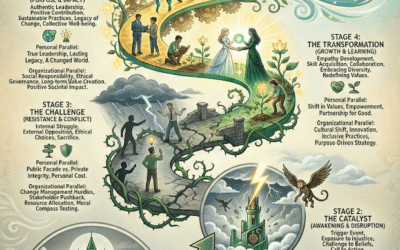Many parts of the world are starting to brace for economic down turn. The Wall Street Journal and lots of publications talk of recession for the US. Some industries such as technology firms have already started cutting back staff. Real estate prices have been dropping. We are still struggling with inflation. The writing is on the wall.
As companies start to tighten their belt expenditures project investment is the first to come under fire. Project and initiative investments are naturally reviewed, consolidated, and cut to try and save money. Large companies typically invest millions to billions to execute their strategy, maintain competitiveness, and improve business effectiveness. Typical cuts in the project world translate to cutting project funding which means that change practitioners like other project professionals may be in the firing line.
As companies start to focus on the critical operations of the business the frequent question that gets asked is “what is the value of change management?”. “Can we save cost by cutting change management?”. Managers would already have a preconception of the value of change management when making this decision.
The challenge then becomes ‘what is ultimately the ‘proof’ of the value of implementing effective change?’ Many will argue that it is that employees are more engaged, managers are communicating the right messages, that employees have the right skills, and that they feel that they are ready for the change. However, ultimately, a project has a set of benefits it is targeted to achieve and the question then becomes what ‘proof’ is that the benefits have been achieved.
For a lot of the work that change practitioners are involved in, the ‘proof’ is the change in the behaviours from A to B. For example, adopting different conversations with the customer, operating a different system, selling a new product, reporting on incidents, following the required steps in completing a form, etc. Ultimately the change in the behaviour results in the targeted benefits being achieved whether it is improved customer experience, cost savings, efficiency in operating a system, or generating greater insights through new data.
What are some of the ways to demonstrate that we are setting the course for ultimate behaviour realisation?
Clear identification of core behaviours
To be able to implement behaviour change we need to know what behaviours we are focused on changing. The trick is not to try and come up with an exhaustive list of all the various types of behaviours that need to take place in the end state. Instead, focus on the core behaviours that will make the most differences in achieving the ultimate benefit.
For example, what are the core 2-3 behaviours that leaders need to display in the end state to ensure those insights are captured and utilised to make better business decisions? It could be being confident in interpreting the data and using any system prompts as required, highlighting the insight generated in planning meetings, and using the insight to make better decisions that result in a better outcome for the organisation.
Measurement
Behaviour realisation need to be measured and as we all know since “what get’s measured get’s managed”. Behaviours may be measured based on a survey, observation, system reports, etc.
Ongoing tracking
In order to successfully embed the new behaviour into business-as-usual ongoing tracking is required. Tracking ensures that the status of the behaviour change becomes visible and therefore becomes a goal to be focused on.
Tracking does not need to be cumbersome and overbearing. It could be as simple as incorporating the reporting into an existing weekly team meeting or a monthly planning meeting. It could also be a system-generated report that is sent to managers.
Our ultimate challenge as change practitioners in driving behaviour changes becomes even more crucial during these difficult financial times. We need to constantly demonstrate how our work directly links to benefit realisation. This may require stakeholder education. Are your stakeholders clear in terms of the importance of behaviours in reaching the benefits? Do they understand the design that has been in place to drive impacted groups toward the end state?
To find out more about driving behaviour realisation & change please go to our Ultimate Guide for Behaviour Change.






